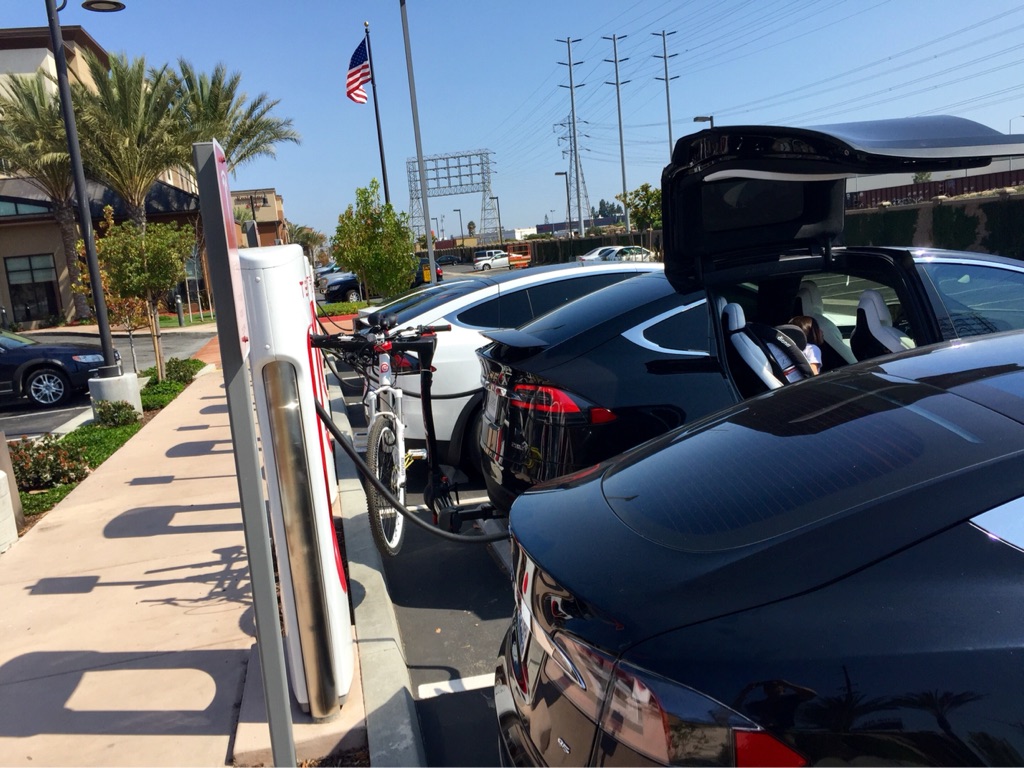

Tesla Model 3
Resistance to EVs: Legacy auto history shows pushbacks are nothing new
It shouldn’t come as a surprise to anyone in the auto industry these days that future cars will need to produce either zero or low emissions. Even if customers aren’t yet demanding all-electric vehicles at the same level as gasoline and diesel-powered vehicles, they certainly aren’t demanding poor fuel efficiency and high levels of tailpipe emissions, either. So, why is there pushback against regulations that demand better transportation products for both people and the environment?
The California Emissions Standard
In the United States, a primary driver of new vehicle emissions standards comes from California’s Low-Emission Vehicle (LEV) and Zero-Emission Vehicle (ZEV) standards. California has unique, critical pollution problems which led to a special exemption in the federal Clean Air Act allowing the state to regulate its own car emissions rather than be limited to (lower) national regulations. While other states can’t write their own laws, they can opt into following California’s standards. So far, 14 states have adopted the LEV standards, and 10 of those have adopted the ZEV standards.
California’s current standards place caps on tailpipe emission levels and mandate a certain number of cars produced each year by manufacturers to be ZEVs and/or plug-in hybrids (PHEVs) on an increasing scale through the year 2025. The number required is calculated by a percentage of credits issued based on electric driving range – the more range the more credit received. In 2018, for example, 4.5 percent credits of new cars produced by a car maker must be ZEVs/PHEVs, and that amount increases to 22% in 2025. When other states adopt California’s emissions standards, the ZEV/PHEV numbers usually come with them.
Auto manufacturers’ history of standing against regulation
The primary objection of the major players in the auto industry to meeting these requirements is the time allotted. Specifically, automakers only have seven years to transition almost a quarter of their fleets to a completely different power source than they’ve been using for decades. At first glance, this seems fair. After all, most car makers have huge bureaucracies and systems in place that take a lot of effort to change in major ways. However, using history as our guide, this reasoning falls flat. The current regulatory environment facing car manufacturers isn’t something new, and neither is the lack of merit in their pushback against it.
In the 1960s, California attempted to implement automotive pollution controls via a passive approach which waited for emissions-reducing devices to be developed before regulating them. This was market-centric and took heavy consideration of the financial impact these devices would have on manufacturers to create in-house, and the auto industry claimed it couldn’t develop the tech needed for years to come. However, when third party devices were brought to market rather quickly (i.e. devices not produced by the car makers themselves, thus requiring purchase and/or licensing), the manufacturers quickly modified their engines to meet the emissions requirements. By doing this, automakers rendered the third party devices moot and wasted their time, effort, and resources. More importantly, car makers’ speedy response to the regulations once enforcement set in led to questions about industry collusion against emissions innovations.

This type of behavior by car makers led to what’s called “technology-forcing” regulations. In other words, because the auto industry has historically been resistant to improving their products purely for safety or environmental reasons on their own, the government has changed its regulatory approach to force the issue with penalties. It’s not that the government is trying to totally control the direction of tech development in the auto market, but rather that the industry has historically used monopolistic-type behaviors to stifle innovations that were in the public interest, which is the government’s job to protect.
Controlling what cars release into the air we breathe isn’t the only thing the auto industry has pushed back against, either. A 1983 US Supreme Court case involving restraint system requirements in cars described the auto industry’s resistance to mandatory airbags as “the regulatory equivalent of war.” Since the addition of air bag systems was costly and required certain redesigns in vehicles, car makers in the 1980s were motivated to prevent their requirement. Myths were spread including that they might cause accidents by going off inadvertently, they are too expensive, and that the public doesn’t want them. Sound familiar? Swap out accidental airbag deployment for Tesla car fires and the three myths sound just like the ones we hear about electric vehicles.
Today’s pushback by car makers
As natural as things like air bags are to us today as basic safety devices in our cars, their merits took time (and regulations) to justify standard installation. Despite visibly thick clouds of smog and high air pollutant ratings in many cities across the U.S. today, automakers still continue to make excuses for meeting low emissions standards in their vehicles and resist ramping up ZEV developments.
In Colorado, for instance, the Colorado Automobile Dealers Association (CADA) actively lobbied against the adoption of California’s emissions standards in the state, saying that customers don’t want electric cars yet, thus making the aggressive ZEV schedule an undue burden on the industry. They argued this while spreading long-busted myths about electric cars and also failing to mention their other lobbying efforts which hamper car makers from selling directly in the state. The irony, of course, is that this is the sales method of the best-selling electric car brand in the world – Tesla. Similar direct-sales restrictions and dealer lobbying efforts exist in several other states across the country.
Prob with Colorado Automobile Dealers Association (@DriveColorado) saying ICEing is not a problem is they've consistently communicated they do not support EVs. Worst of all they do sophomoric things like exclude @Tesla EVs from site. See @KDVR story here: https://t.co/PWWtZjXKjR pic.twitter.com/PhgfhntG9N
— Sean Mitchell (@seanmmitchell) April 23, 2019
Perhaps the most stunning display of resistance to change put forward by legacy car makers is their behavior after the US changed presidential administrations in 2017. After working closely with the last administration to create “harmonized” fuel-economy standards at the federal and state levels, automakers petitioned the incoming administration to re-review the final rule agreed to in 2012. In their letter, they argued the existing rule “over-projects technology efficiencies and inadequately accounts for consumer acceptance and marketplace realities”, while especially complaining about the ZEV mandate adopted by ten states. No mention of Tesla’s success or self-reflection over why they were failing to replicate it, of course.
After the administration moved forward with the changes requested, California stood its ground on the issue and indicated it would mount a legal challenge against the loosened regulations and entangle automakers in an “extended period of litigation and instability.” Seeing the headaches and financial hits on the way, automakers have urgently asked for more negotiations and compromise between California and the federal government over the issue, but it’s unlikely to happen at this point. Actions have consequences indeed.
But even after all this, the industry may be coming around anyhow.
The way forward
California’s emissions standards are quickly becoming the new normal as customers are demanding more environmentally sustainable (and cleaner) options for their vehicle purchases. Implementing technology-forcing regulations has helped result in a variety of ZEV choices being offered already. It’s unfortunate that the auto industry has a history of resisting beneficial changes to its products, but we’ve finally hit a potential turning point.
Rising ZEV sales over the last few years have been entirely market driven, and the spread of California’s regulatory framework for cars hasn’t happened at the behest of the federal government. It has been consumers voting both at the ballot and with their wallets that are leading the charge to bring ZEVs to the mass market. Most major car manufacturers now have plans to transition their fleets over to battery-powered operation over the next ten or so years, and as the industry continues its incredible growth, automakers may finally come to realize that when their customers benefit from their products, they will as well with new sales.

News
Tesla dominates in the UK with Model Y and Model 3 leading the way
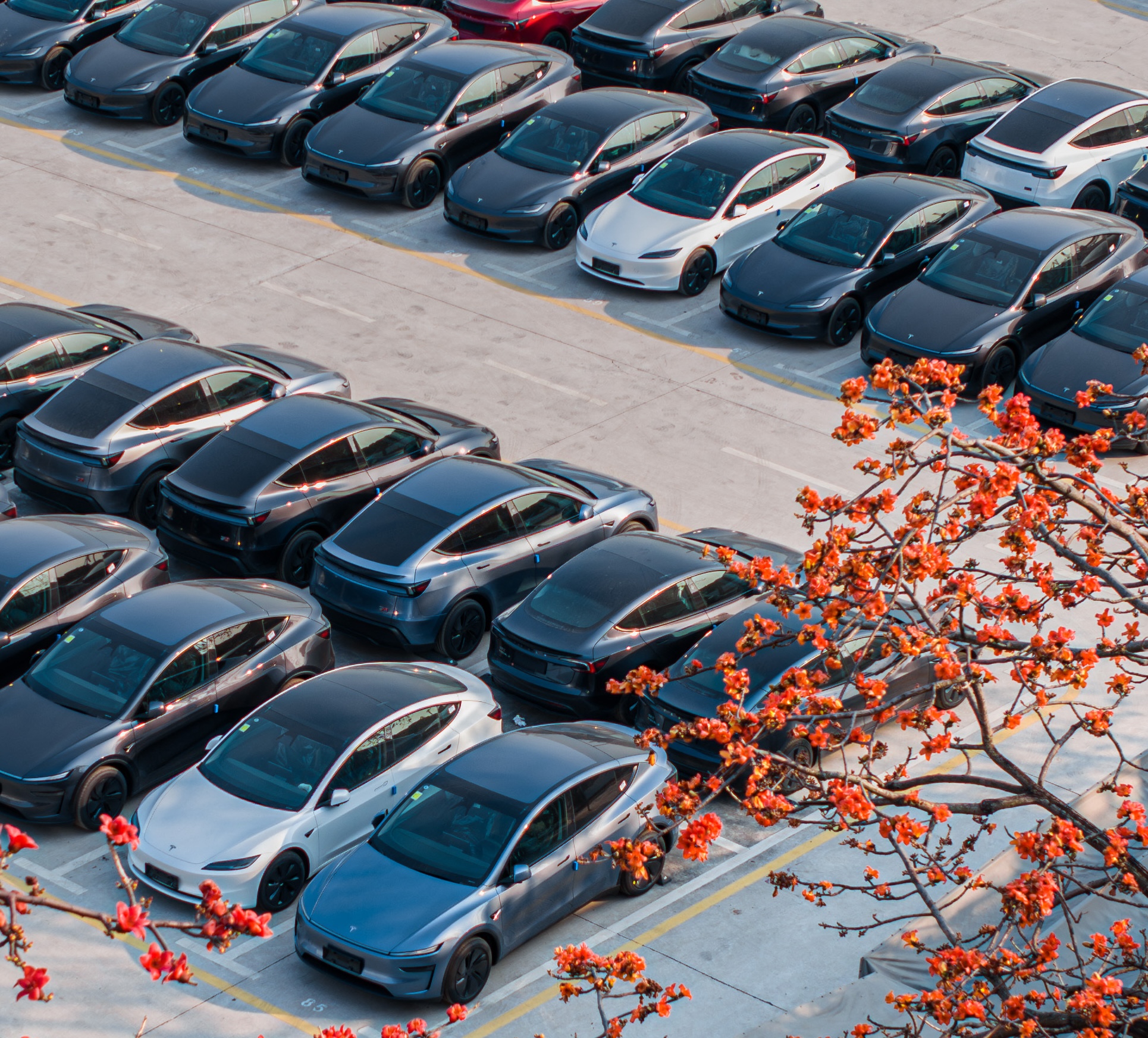
Tesla is dominating in the United Kingdom so far through 2025, and with about two weeks left in the year, the Model Y and Model 3 are leading the way.
The Model Y and Model 3 are the two best-selling electric vehicles in the United Kingdom, which is comprised of England, Scotland, Wales, and Northern Ireland, and it’s not particularly close.
According to data gathered by EU-EVs, the Model Y is sitting at 18,890 units for the year, while the Model 3 is slightly behind with 16,361 sales for the year so far.
The next best-selling EV is the Audi Q4 e-tron at 10,287 units, lagging significantly behind but ahead of other models like the BMW i4 and the Audi Q6 e-tron.
GOOD NEWS 🇬🇧 Tesla is absolutely crushing the UK electric vehicle market in 2025 💥
The numbers are in, and the dominance is clear. With an impressive amount of 42,270 vehicles delivered year-to-date, the brand now commands a solid 9.6% market share of the total auto market 🆒… pic.twitter.com/dkiGX9kzd0
— Ming (@tslaming) December 18, 2025
The Model Y has tasted significant success in the global market, but it has dominated in large markets like Europe and the United States.
For years, it’s been a car that has fit the bill of exactly what consumers need: a perfect combination of luxury, space, and sustainability.
Both vehicles are going to see decreases in sales compared to 2024; the Model Y was the best-selling car last year, but it sold 32,610 units in the UK. Meanwhile, the Model 3 had reached 17,272 units, which will keep it right on par with last year.
Tesla sold 50,090 units in the market last year, and it’s about 8,000 units shy of last year’s pace. It also had a stronger market share last year with 13.2 percent of the sales in the market. With two weeks left in 2025, Tesla has a 9.6 percent market share, leading Volkswagen with 8 percent.
The company likely felt some impact from CEO Elon Musk’s involvement with the Trump administration and, more specifically, his role with DOGE. However, it is worth mentioning that some months saw stronger consumer demand than others. For example, sales were up over 20 percent in February. A 14 percent increase followed this in June.
News
Tesla Model 3 and Model Y dominate China’s real-world efficiency tests
The Tesla Model 3 posted 20.8 kWh/100 km while the Model Y followed closely at 21.8 kWh/100 km.
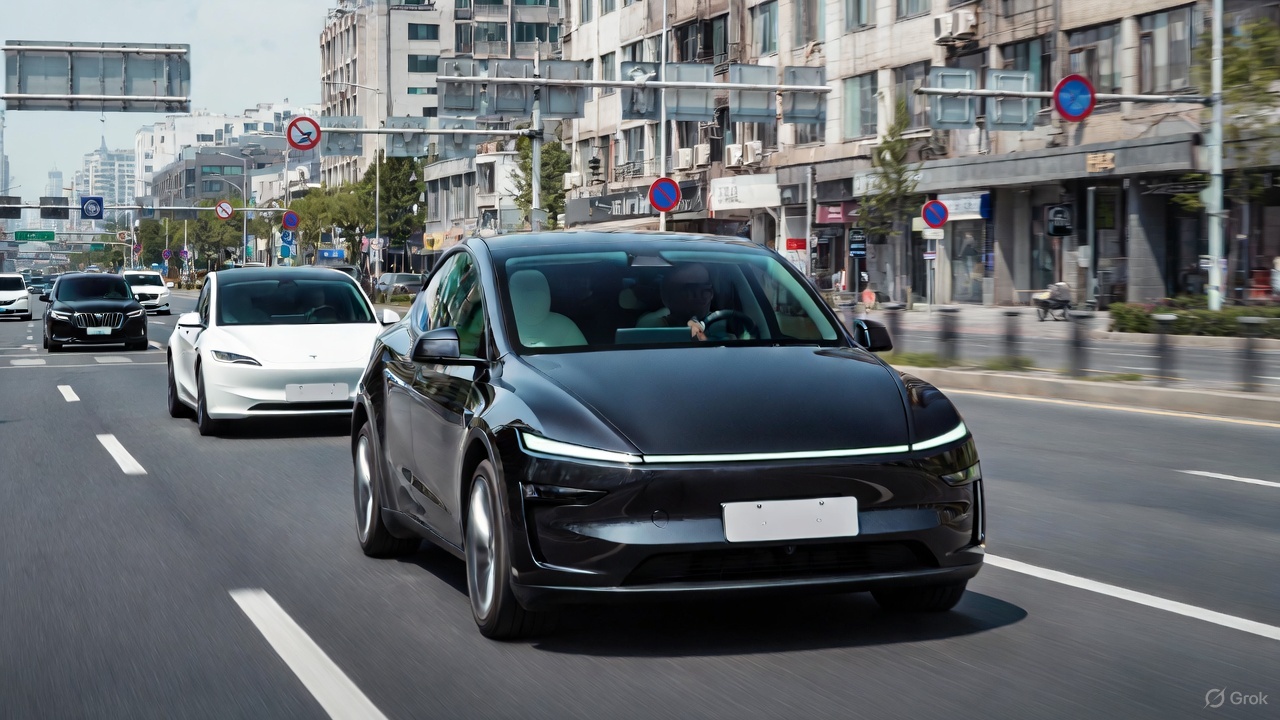
Tesla’s Model 3 and Model Y once again led the field in a new real-world energy-consumption test conducted by China’s Autohome, outperforming numerous rival electric vehicles in controlled conditions.
The results, which placed both Teslas in the top two spots, prompted Xiaomi CEO Lei Jun to acknowledge Tesla’s efficiency advantage while noting that his company’s vehicles will continue refining its own models to close the gap.
Tesla secures top efficiency results
Autohome’s evaluation placed all vehicles under identical conditions, such as a full 375-kg load, cabin temperature fixed at 24°C on automatic climate control, and a steady cruising speed of 120 km/h. In this environment, the Tesla Model 3 posted 20.8 kWh/100 km while the Model Y followed closely at 21.8 kWh/100 km, as noted in a Sina News report.
These figures positioned Tesla’s vehicles firmly at the top of the ranking and highlighted their continued leadership in long-range efficiency. The test also highlighted how drivetrain optimization, software management, and aerodynamic profiles remain key differentiators in high-speed, cold-weather scenarios where many electric cars struggle to maintain low consumption.
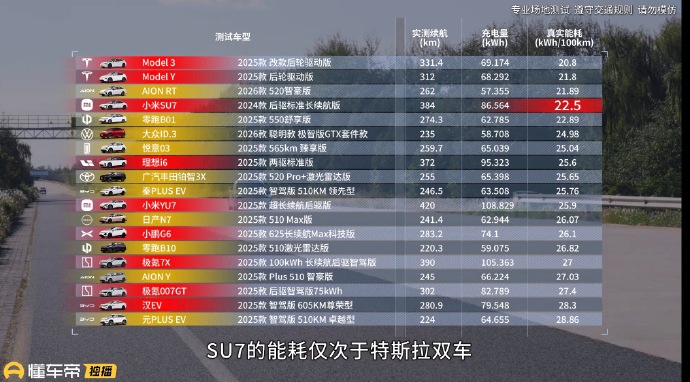
Xiaomi’s Lei Jun pledges to continue learning from Tesla
Following the results, Xiaomi CEO Lei Jun noted that the Xiaomi SU7 actually performed well overall but naturally consumed more energy due to its larger C-segment footprint and higher specification. He reiterated that factors such as size and weight contributed to the difference in real-world consumption compared to Tesla. Still, the executive noted that Xiaomi will continue to learn from the veteran EV maker.
“The Xiaomi SU7’s energy consumption performance is also very good; you can take a closer look. The fact that its test results are weaker than Tesla’s is partly due to objective reasons: the Xiaomi SU7 is a C-segment car, larger and with higher specifications, making it heavier and naturally increasing energy consumption. Of course, we will continue to learn from Tesla and further optimize its energy consumption performance!” Lei Jun wrote in a post on Weibo.
Lei Jun has repeatedly described Tesla as the global benchmark for EV efficiency, previously stating that Xiaomi may require three to five years to match its leadership. He has also been very supportive of FSD, even testing the system in the United States.
News
Tesla Model 3 and Model Y named top car buys in Norway
Despite growing competition from European and Korean brands, both models stood out for their balance of price, performance, and everyday usability.
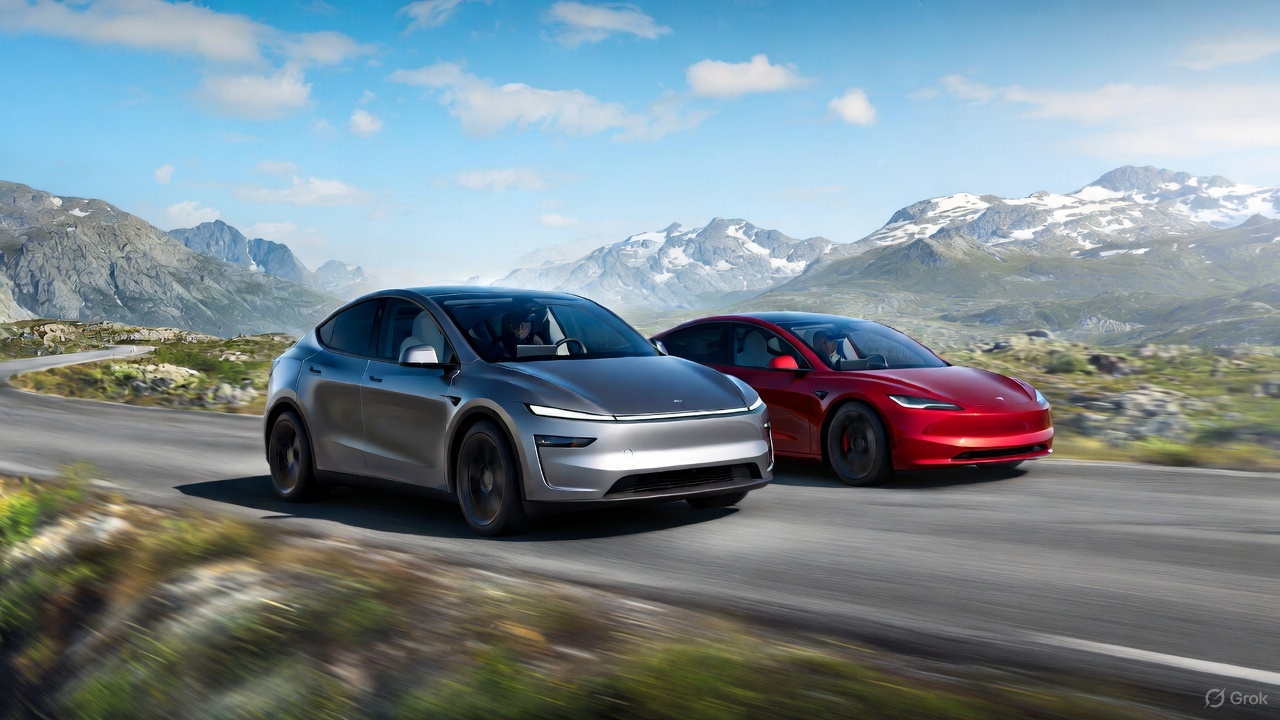
Norway’s annual roundup of the best car purchases featured Tesla’s two main sellers this year, with the Model 3 and Model Y securing top positions in their respective segments.
Despite growing competition from European and Korean brands, both models stood out for their balance of price, performance, and everyday usability. The verdict comes as electric vehicle adoption remained above 95% of new vehicle sales in the country.
Tesla Model 3 strengthens its value position
Among compact EVs, the Tesla Model 3 maintained its position as the best overall buy thanks to its strong blend of performance, efficiency, and updated features. Reviewers noted that every trim offered compelling value, especially with the all-electric sedan’s improved cabin ergonomics and the return of the turn-signal stalk, which was one of the few previous complaints among drivers.
The Model 3’s mix of long-range capability, low operating costs, and responsive handling has continued to set the benchmark for compact EVs in Norway. While competitors from Hyundai, Volkswagen, and Peugeot have narrowed the gap, Tesla’s price-to-capability ratio has remained difficult to beat in this segment, Motor.no reported.
“The Model 3 clearly offers the best value for money in the compact class, no matter which version you choose. Now it also gets the turn signal lever back. This eliminates one of the few flaws in a driving environment that many believe is the best on the market,” the publication wrote.
Tesla Model Y claims its crown
The Tesla Model Y emerged as Norway’s top family-car purchase this year. The latest refresh introduced improvements in ride quality, styling, and interior materials, allowing the Model Y to deliver a more premium driving experience without a substantial price increase.
Reviewers praised its spacious cabin, strong safety profile, and practical range, all of which reinforced its appeal for families needing an all-purpose electric crossover. The Model Y remains especially notable given its continued popularity in Norway even as Tesla faces declining sales in other global markets.
“The Model Y is back as the winner in the family class. The upgrade in the new year was even more extensive than expected. It is a slightly more elegant and significantly more comfortable Model Y that solidifies its position as Norway’s best car purchase in the most important class,” the Norwegian motoring publication noted.








